Scientific name Chromatiales Rank Order | ||
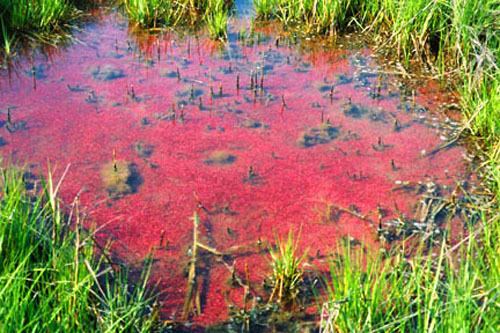 | ||
Similar Bacteria, Green sulfur bac, Chromatium, Chromatiaceae, Chlorobium | ||
Purple sulfur bacteria top 13 facts
The purple sulfur bacteria are a group of Proteobacteria capable of photosynthesis, collectively referred to as purple bacteria. They are anaerobic or microaerophilic, and are often found in hot springs or stagnant water. Unlike plants, algae, and cyanobacteria, they do not use water as their reducing agent, so do not produce oxygen. Instead, they use hydrogen sulfide, which is oxidized to produce granules of elemental sulfur. This, in turn, may be oxidized to form sulfuric acid.
Contents
- Purple sulfur bacteria top 13 facts
- Rex dive 022 23 purple sulfur bacteria
- Biomarkers of the Purple Sulfur Bacteria
- References
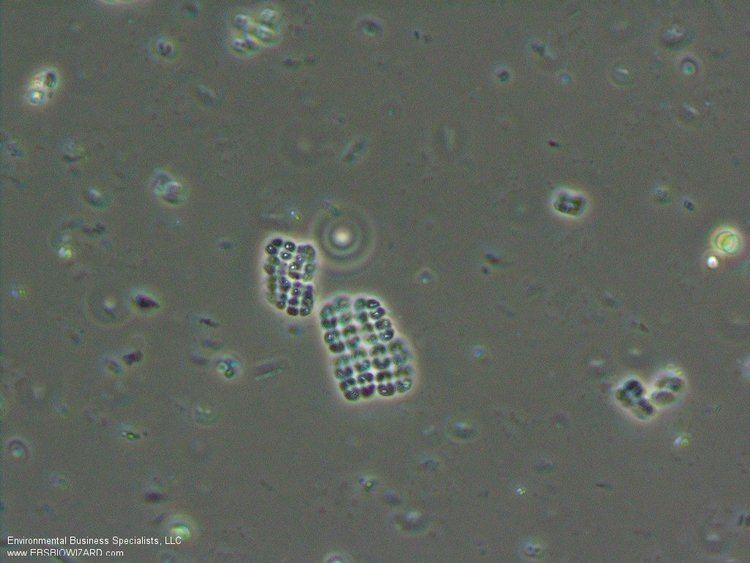
The purple sulfur bacteria are divided into two families, the Chromatiaceae and the Ectothiorhodospiraceae, which respectively produce internal and external sulfur granules, and show differences in the structure of their internal membranes. They make up the order Chromatiales, included in the gamma subdivision of the Proteobacteria. The genus Halothiobacillus is also included in the Chromatiales, in its own family, but it is not photosynthetic.
Purple sulfur bacteria are generally found in illuminated anoxic zones of lakes and other aquatic habitats where hydrogen sulfide accumulates and also in "sulfur springs" where geochemically or biologically produced hydrogen sulfide can trigger the formation of blooms of purple sulfur bacteria. Anoxic conditions are required for photosynthesis; these bacteria cannot thrive in oxygenated environments.
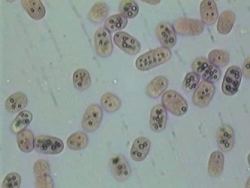
The most favorable lakes for the development of purple sulfur bacteria are meromictic (permanently stratified) lakes. Meromictic lakes stratify because they have denser (usually saline) water in the bottom and less dense (usually fresh water) nearer the surface. If sufficient sulfate is present to support sulfate reduction, the sulfide, produced in the sediments, diffuses upward into the anoxic bottom waters, where purple sulfur bacteria can form dense cell masses, called blooms, usually in association with green phototrophic bacteria.
Purple sulfur bacteria are also a prominent component in intertidal microbial mats, such as the Sippewissett Microbial Mat, which have a dynamic environment due to the flow of the tides and incoming fresh water and gives them a similar favorable environment as meromictic lakes. Purple sulphur bacteria have bacteriopurpurin pigment. It uses inorganic sulphur substances as electron and H+ donors.
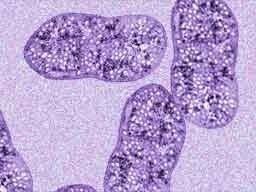
Rex dive 022 23 purple sulfur bacteria
Biomarkers of the Purple Sulfur Bacteria
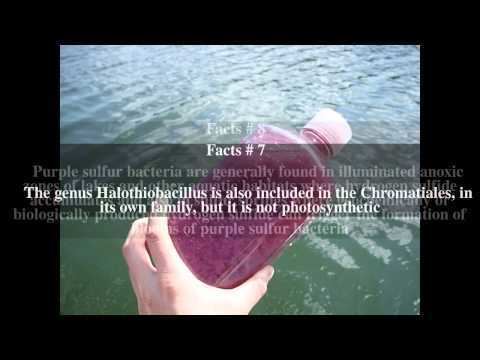
Purple sulfur bacteria make conjugated pigments called carotenoids that function in the light harvesting complex. When these organisms die and sink, some pigment molecules are preserved in modified form in the sediments. One carotenoid molecule produced, okenone, is diagenetically altered to the biomarker okenane. The discovery of okenane in marine sediments implies the presence of purple sulfur bacteria during the time of burial. So far, okenane has only been identified in one sedimentary outcrop from Northern Australia dating to 1640 million years ago. The authors of the study concluded that, based on the presence of purple sulfur bacteria's biomarker, the Paleoproterozoic ocean must have been anoxic and sulfidic at depth. This finding provides evidence for the Canfield Ocean hypothesis.
